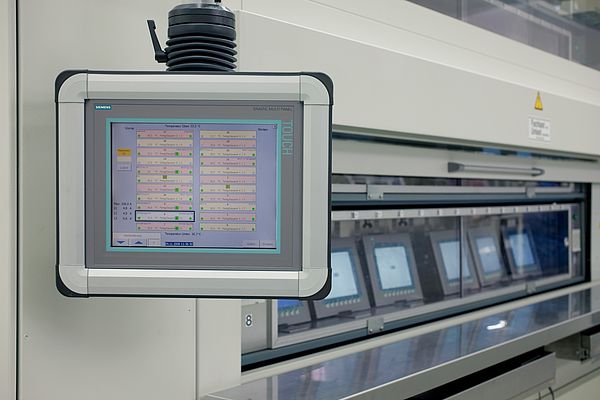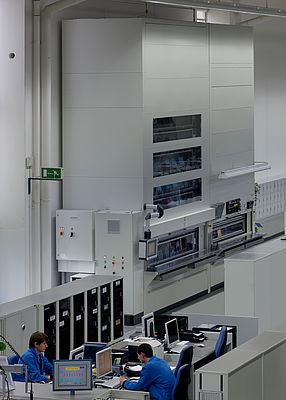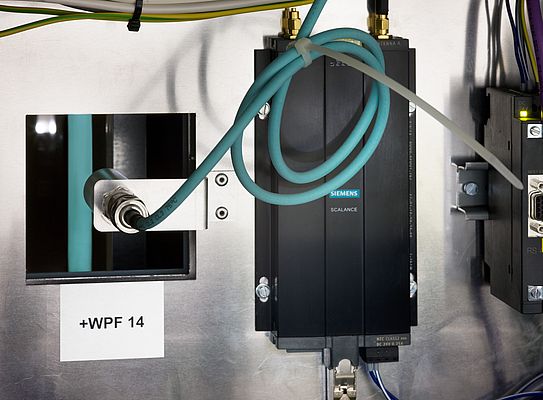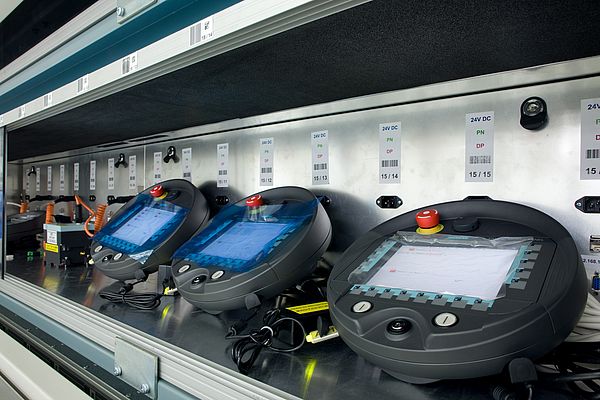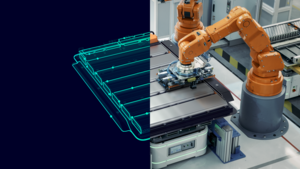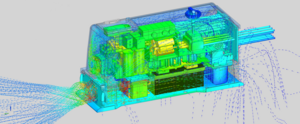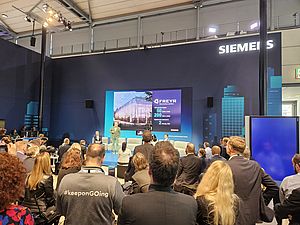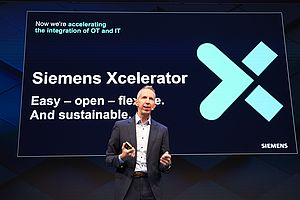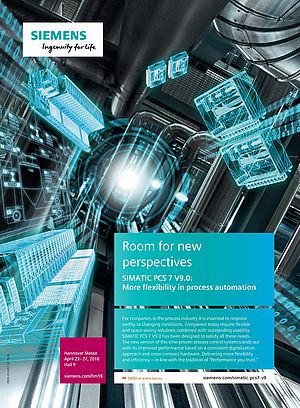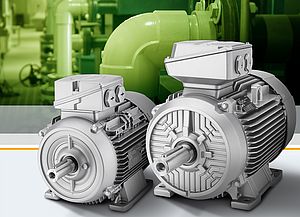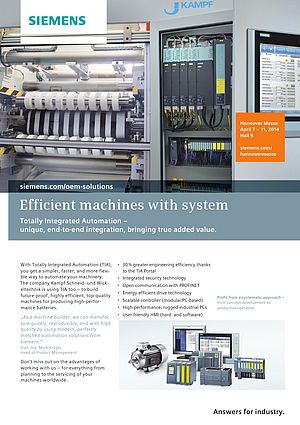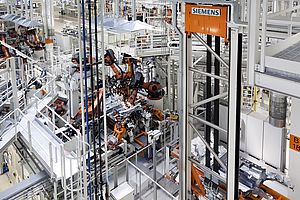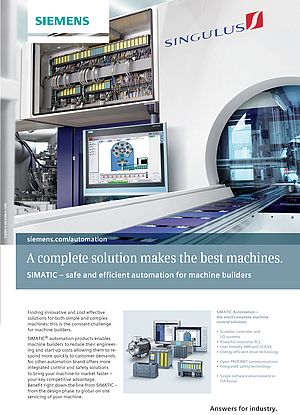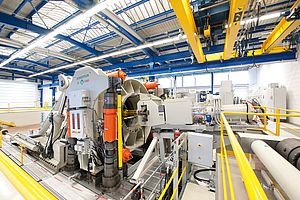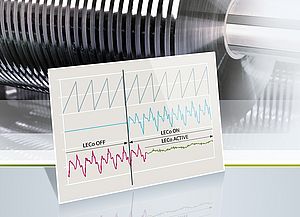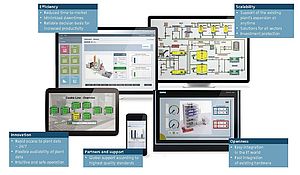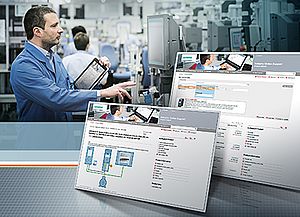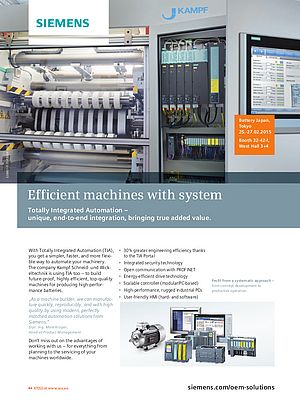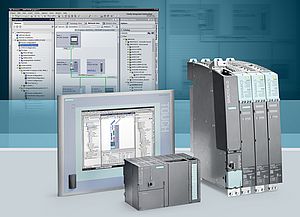"The best European factory 2007" relies on in-house industrial wireless LAN technology for the internal networking of a new paternoster system for continuous temperature tests on operator panels. The paternoster uses the third dimension in order to save floor space. The wireless communications solution also minimizes the cabling and maintenance overhead, and increases the flexibility as well as the operating and testing convenience of the system.
Maximum reliability and functionality under demanding environmental conditions – such as increased dust, dirt, splash water and/or temperature – are for many users important criteria when using operator panels at the machine level. The Simatic HMI devices from Siemens are well-known for their ruggedness and comprehensive industrial compatibility. Most devices are manufactured in the Amberg Electronics Manufacturing Plant (EWA).
The factory, which was judged in 2007 as the "Best European factory" implements advanced quality assurance at its three HMI assembly lines for several hundred thousand panels per year. In addition to the 100% function test, this also includes a continuous temperature tests on random units. It is generally the case that several devices of a production series are tested for 24 hours at the application temperatures of up to 55 °C specified by the product management. The automatic test cycle simulates a typical, practice-oriented configuration. The system theoretically also allows longer tests with a thermal capacity of 2 kW and temperatures of up to 70 °C, as well as tests for short-term loading of the devices with increased temperature peaks.
Paternoster saves space
Since floor space always results in costs, managers at the Amberg Electronics Manufacturing Plant already decided at the beginning of the 1990s to carry out the temperature tests in a paternoster system which utilizes the third dimension, namely the height of the hall. The factory management also remained true to this principle when the thermal testing capacity had to be extended. The new solution developed together with Siemens Industry Solutions (I IS) takes into account the knowledge gained in the meantime, and applies in-house state-of-the-art network technology, including Industrial Wireless LAN (IWLAN).
The paternoster system of the second generation has been improved in many respects, and consists of 22 circulating test compartments which can be heated individually. Two sliding glass doors enable stocking and removal at the front. Each compartment has space for 1 to 16 operator panels from the complete Simatic HMI range, extending from Push Button Panels, Multi Panels and Touch Panels, up to Mobile Panels. The test location and the type of device (MLFB number) are recorded by the operator using a barcode scanner. The relevant test parameters – primarily the temperature sequence and the dwell time – are stored in the database of an external master controller – a Simatic S7‑300 with CPU 317‑2 PN/DP – in the form of device-specific test configurations.
If a compartment has been stocked and the doors closed, the test can be started and the paternoster moved in order to stock a further compartment or remove tested devices. A separate "compartment CPU" and a separate "test CPU" of the same type as the master CPU – a total of 44 controllers – serve to achieve the corresponding control, communication and test decoupling of the thermal compartments in the paternoster. The individual compartment CPUs reduce the load on the test CPUs in that they coordinate all control tasks with the master controller, in other words the transmission of the test requirements in one direction and of the test results in the other.
The maximum number of 16 tested devices are connected either via the Profinet or Profibus interface of the controller, meaning that the complete portfolio of current, future or even earlier devices can be tested together extremely flexibly without the need for conversions. Each thermal compartment also contains 16 connection sockets each for 24 V DC, Profibus, and Profinet. The latter are connected to the test and compartment CPUs via a Scalance X124 Industrial Ethernet switch (24 ports, unmanaged). To enable special diagnostics operations to be carried out on HMI devices returned from field use, the test CPU is provided with a special test configuration by means of a Micro Memory Card – rapidly, simply and without the need for a programming device.
The paternoster is operated using a Simatic Multi Panel MP377 with 15" touch display. The device from in-house production provides a visual picture of the compartment occupation and the operating status of each tested device. A new feature is that a temperature histogram is produced for each compartment. During the night, the test results are transferred via the integrated Industrial Ethernet interface of the panel to a server in the factory network for archiving, further processing, and documentation.
Industrial Wireless LAN makes contact conductors superfluous
To prevent problems from occurring in the moving, circulating paternoster system due to high-maintenance and fault-prone contact conductors or other mechanical solutions for data transmission, an IWLAN solution was envisaged for transmission of the test parameters and data right from the beginning.
For this purpose, each compartment CPU in the paternoster is connected to a separate Scalance W747‑1 IWLAN client. This establishes the radio link to a Scalance W784-1RR access point, which is located with the master controller in the external control cabinet of the paternoster. The radio transmission is carried out in the 5 GHz band. The special feature of this radio link is the RCoax cable (leaky wave conductor) as the special antenna for a defined local radio field, and the associated IWLAN antenna (ANT793‑4MN) on the other side.
The two finger-thick RCoax leaky wave conductors are fitted – contrary to the usual horizontal installation – vertically in the hollow space between the circulating compartments and in front of the rear panel in the paternoster, and are powered by separate Scalance W784‑1RR access points in the external control cabinet of the paternoster. Contrary to omnidirectional antennas, the RCoax links facilitate the design of an exactly defined, clearly manageable and noise-resistant radio field even in a demanding environment as is the case here with many metallic reflecting surfaces. It has been proven appropriate that the latest generation of Scalance W devices have an even slimmer design than their predecessors, enabling problem-free direct installation in the control cabinet even when space is limited.
An antenna is inserted into each compartment through a cutout in the rear panel, and runs along the leaky wave conductor. The antennas have an extremely compact design, and are resistant to vibrations and unintentional adjustment. In order to distribute the communication load uniformly and to ensure reliable data transmission, groups of 11 compartments or their IWLAN clients have a fixed assignment to one of the two access points by means of an unambiguous network ID (SSID) – independent of their position in the paternoster cycle (front or rear). When moving upwards, the antenna is closer to one of the two leaky wave conductors, and the distance is a little larger when moving downwards, and vice versa.
The two access points are connected to a Scalance X005 Industrial Ethernet switch (5 ports, unmanaged), which is connected in turn to the master controller by means of an additional CP 343‑1 Ethernet communications processor. The communications processor reduces the load on the Profinet interface of the master CPU (designed for a maximum of 16 connections) in that it independently handles part of the data traffic.
The iPCF functionality of the Scalance W747‑1 IWLAN clients is also decisive for fast and reliable wireless communication. This allows short, predictable and reproducible response times in Profinet IO mode even with larger numbers of nodes – in other words, the deterministic behavior which is indispensable for many industrial applications.
Scope for further system optimization
The high reliability of the communications function awakens additional desires in order to optimize the hardware testing of the HMI devices even further. For example, the functionality is to be expanded further and a facility implemented for generating and sending an automatic feedback in the event of faults. This would open up even more detailed test results, thus allowing more precise and direct conclusions to be made concerning potential weak points in the production process. The manual scanning of the device type as carried out currently could then be omitted and automated.
For further simplification and improvement of the operating sequences, an industrial PC is being considered instead of the individual local operator panel. This PC provides a Simatic thin client with data in order to be able to operate and/or monitor the paternoster even from a larger distance.
Hans Büttner, the responsible production planner at the Amberg Electronics Manufacturing Plant, is more than pleased with the new paternoster system, which is completely automated using Siemens components – but not "at all costs" – and has already been running fault-free and maintenance-free for one year. The use of in-house products is not a stipulation for planners and decision-makers at Siemens, but the solution must be convincing: "Handling has become significantly simpler, and testing is far more flexible and user-friendly. In addition, the solution has reduced the number of manual operations which are open to faults." The fundamental IWLAN advantages also include the significantly reduced cabling overhead compared to hardwired communications technology. "We are therefore also considering replacing our older paternoster by a second IWLAN-based system."
Author: Anja Adling, Product manager at business unit Sensors and Communication, Siemens Industry Automation, Nuremberg, Germany


